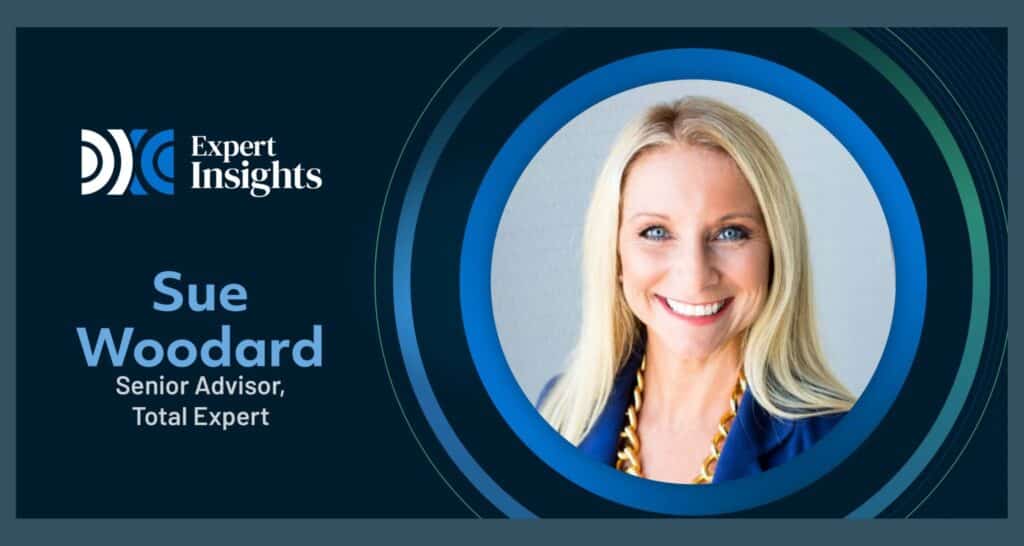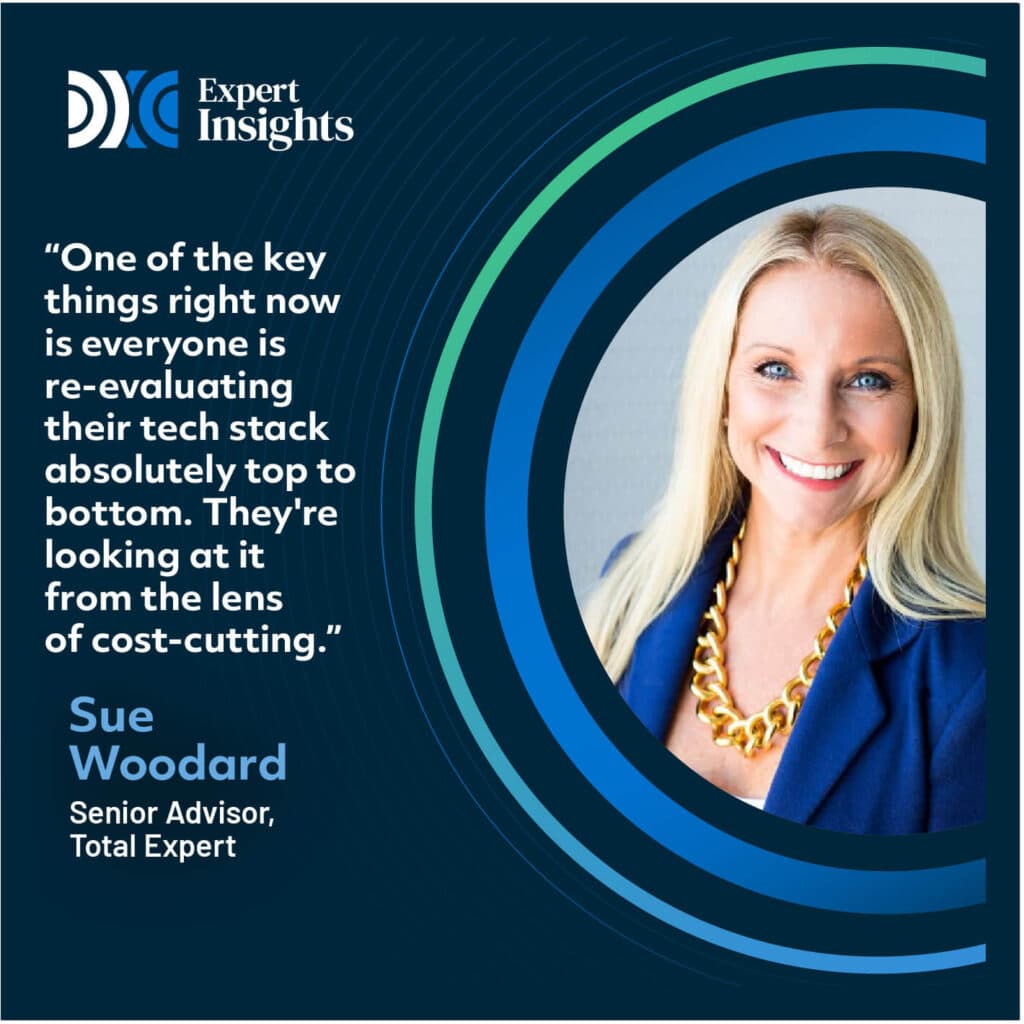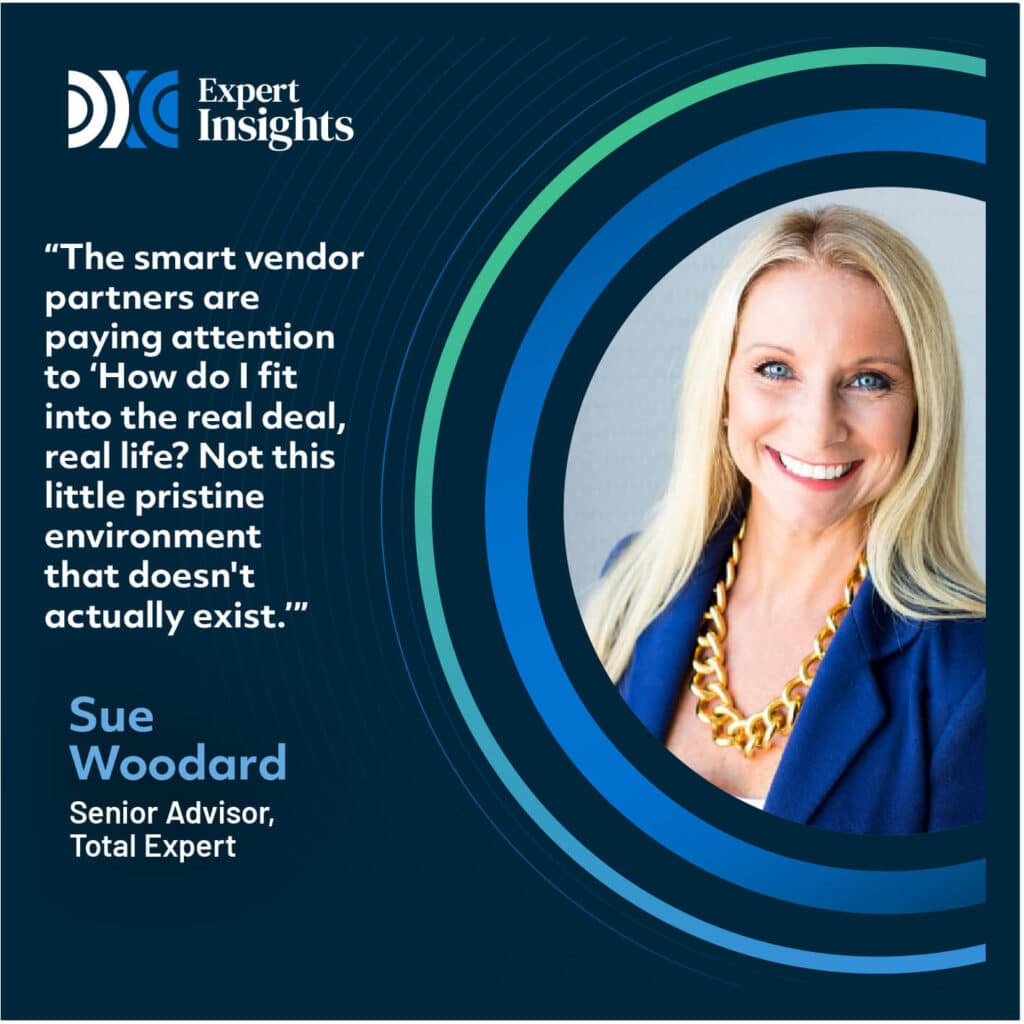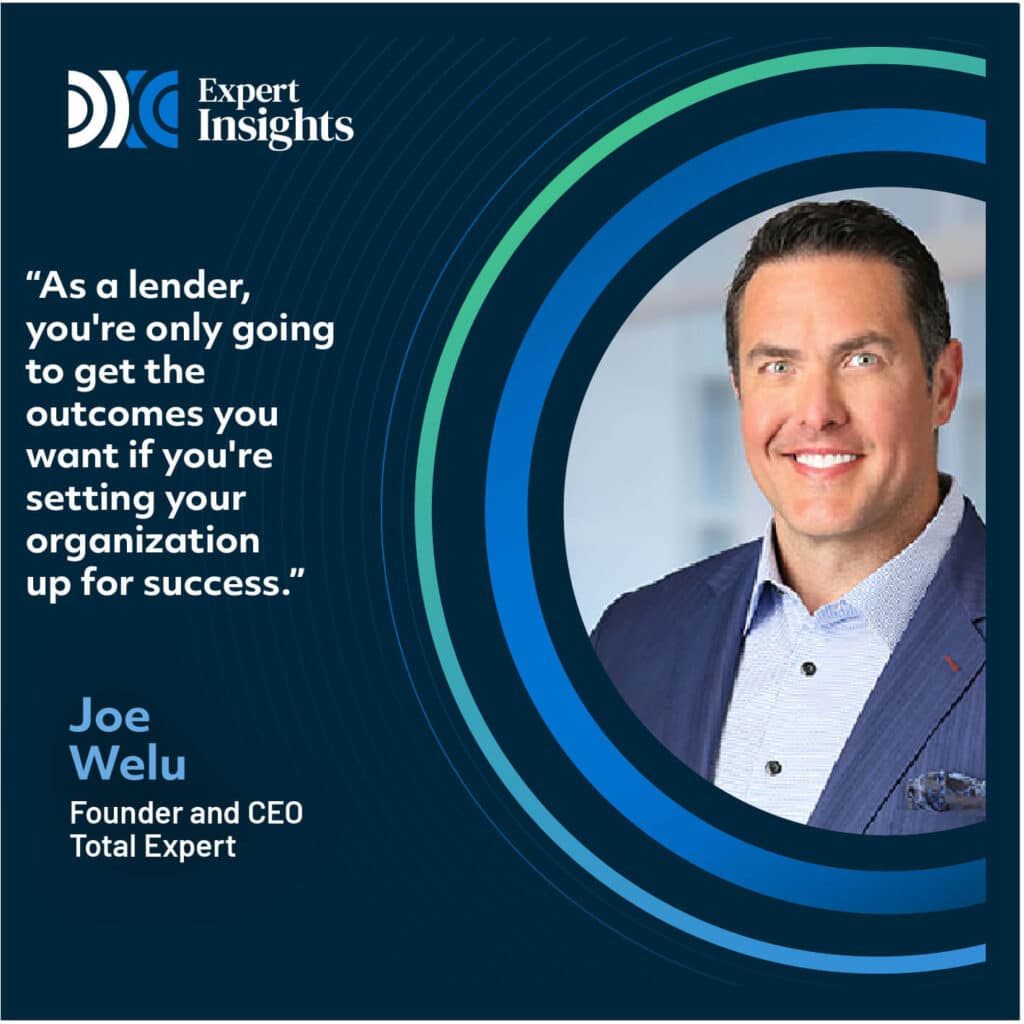
—
Watch the episode here
Listen to the podcast here
Technology Evaluation: Tech Stack Or ‘Franken-Stack?’
Sue, thanks so much for stopping by the studio again. I want to talk a little bit about how banks and lenders are thinking about and evaluating technology in this environment. Considering the macro environment that we’re in, what are your thoughts?
Certainly, everybody reading is very well aware of what the macro environment is with so much of a decline in terms of production, profitability, and everything else. It’s been very interesting having had the opportunity, particularly, to talk to a lot of lenders and to hear their very open dialogue about how they’re looking at technology and some of the decisions they’re making now.
Give us a little context. When you say you’re talking to companies, and you’ve been in the industry so long, you’re so well-respected. You’re not just having conversations with friends, which I’m sure you are as well. These are formal settings where C-level executives are going deep into how they’re thinking about it to give some context.
In some of the workshops that I’ve been in, some of the meetings, some of the round tables, I’ve got the ability to hear very directly what lenders are saying. In fact, not too long ago, I had the opportunity to sit on a panel at The Mortgage Bankers Association, talking about the ROI of technology. It’s very interesting. I’ve been on both the lender side, as well as on the solution provider or vendor partner side. There are times that it’s interesting. I feel almost like a mediator or counselor sometimes to be in the middle because I hear these things from lenders where there is another perspective that is from the vendor side, but I don’t always know if the vendor solution providers hear the unvarnished things that sometimes I do.

It’s helpful always to get that perspective. One of the things that we talk about internally as a company. As a technology provider that serves so many of these organizations, the empathy, and understanding you have to have for what’s important to them. How they’re thinking about the business and the problems they’re solving is more important than it ever has been. What are some of the top bullet points that are coming up when you’re having these conversations?
One of the key things right now is everyone is re-evaluating their tech stack from top to bottom. They’re looking at it from the lens of cost-cutting. “Is this still making sense for us? How would we know?” I’ve heard people tell stories about anything over $5,000. The CEO of the company’s looking at it saying, “What is this? What are we getting out of this? Is this bringing us, new customers? What is this doing for us?”




From the lenders that I’ve heard their perspective. I tell the solution providers or technology vendors, “You’ve got to stay in the game with them. Understand they are running a lot of different things going on, not just what you do. You have to think about your place and come alongside that lender. Right now, specifically, come alongside that lender with the resources that nobody knows.” For example, Total Expert. Better than all the people at Total Expert to point. That’s why you’ve got an investment in engagement resources and things like that. What I would tell the lenders is a couple of things. When you are implementing technology or carving off one solution, getting everybody on one, there’s a very key thing that lenders sometimes miss. One of them is what you just said. You have to know what outcomes you’re looking for and be very realistic about it. What does success look like? How will we know when we get there? What outcomes can we expect to have? Where did we start? Sometimes people don’t have a baseline of where they started with knowing when they’ve made a motion on it because they don’t know where they started. Sometimes people don't have a baseline of where they started with knowing when they've made a motion on it because they don't know where they started. Share on X That’s such a common mistake. We’ve made that mistake many times. We go in and make a ton of progress, but something’s disconnected there. Generally, you didn’t quantify and clarify exactly where you were in terms of the current state. If you can’t do that, then it’s difficult to measure the progress. It’s one of those places where lenders and vendors need to come together better. Once lenders know what those outcomes are, they need to be open-minded to thinking about, “Maybe there’s a different way of getting there than the way that I am used to doing it.” It’s one of the wonderful things that a lot of great vendors bring to the table. You work with some of the best logos in the entire industry. “Here are the best practices. Let us give you those best practices.” That’s a gift, but you have to be willing to look at those and institute those into your own organization. One of the other pieces that I’m passionate about this particular point is leaders in the lender organization need to lead and stay engaged. In fact, Len Tichy who’s one of the Partner Emeritus at STRATMOR said it was the number one thing that he would see if technology was going to work or not inside of an organization. He said it was almost less about the technology than it was about the leadership team that was going to be executing. That’s a profoundly true statement. I’ve always believed it’s the combination of talented, passionate, engaged people and technology. If you have one without the other, you don’t get the outcome. The best is when you have an A technology and an A team. He said, “We’ve seen A teams be able to make a C technology work. We’ve never seen an A technology work great when it’s being put in place with the C team.” Well said. Sue, thanks for providing your perspective on some of those technology discussions. I look forward to doing it again, soon. Thanks for having me. See you.
Important Links
About Sue Woodard
